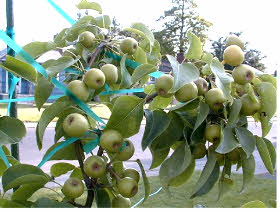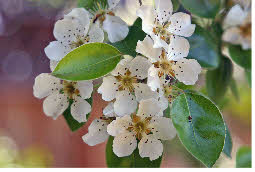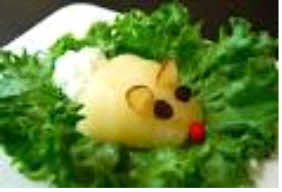Several species of pear are valued for their edible fruit, while others are cultivated as ornamental trees. The term “pyriform” is sometimes used to describe something which is pear-shaped. The white petals of pears and plumbs are the heralds, first bloomers, of spring. In the fall the crop is traditionally gathered at three different times: the first a fortnight or more before it is ripe, the second a week or ten days after that, and the third when fully ripe. The first gathering will come into eating last, and thus the season of the fruit may be considerably prolonged.
Antiquity
The first mention of the pear is found in Homer’s (9th century BC) epic poem, The Odyssey, confirming that  the pear was cultivated in Greece as early as three thousand years ago. The pear is included as one of the “gifts of the gods” which grew in the garden of Alcinöus, the King of the Phaeacians, a legendary country:
the pear was cultivated in Greece as early as three thousand years ago. The pear is included as one of the “gifts of the gods” which grew in the garden of Alcinöus, the King of the Phaeacians, a legendary country:
And without the courtyard by the door is a great garden, of four plough-gates, and a hedge runs round on either side. And there grow tall trees blossoming, pear-trees and pomegranates, and apple-trees with bright fruits, and sweet figs, and olives in their bloom. …. Pear upon pear waxes old, and apple on apple, yea, and cluster ripens upon cluster of the grape, and fig upon fig. …These were the splendid gifts of the gods in the palace of Alcinöus.
(The Odyssey Book VII, Hedrick, 1921).
Use canned or fresh peeled pears, cottage cheese for the tail, almonds for ears and chocolate chips or raisins for eyes and a red M & M or cinnamon candy for a nose. Nestle it on a green bed of lettuce.






